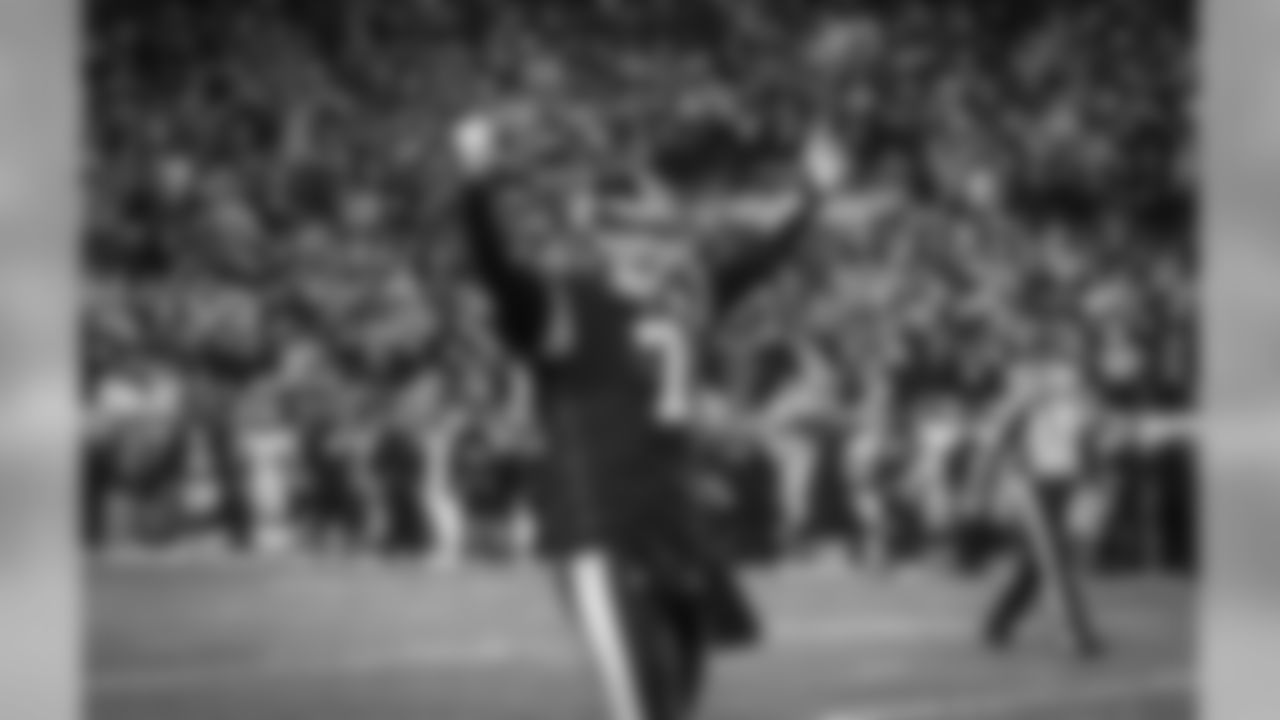The Steelers weren't as successful with the ball in their hands on two-point conversions this season as they had been in 2015.
It wasn't from a lack of preparation.
The Steelers' attention to detail as it relates to two-point plays was evident in their AFC Divisional Playoff Game on Jan. 15 at Kansas City.
Twice.
The Chiefs scored a touchdown that cut the Steelers' lead to 18-16 with 2:43 left in the fourth quarter, and next went for two in an effort to tie the score.
Kansas City's first try resulted in a completion that was negated by a holding penalty (offensive tackle Eric Fisher on linebacker William Gay).
On KC's second attempt, safety Sean Davis made a play on the ball and broke up a pass to wide receiver Jeremy Maclin.
After receiving a kickoff, converting a first down and then running out the clock, the Steelers were on their way to New England and the AFC Championship Game.
Their ability to defend two-point attempts was critical in getting them there.
Check out the best photos from the 2016 season.

Le'Veon Bell

Sammie Coates

Ben Roethlisberger

Le'Veon Bell and Ramon Foster

Ryan Shazier and Vince Williams

Ben Roethlisberger

Jordan Dangerfield, Steven Johnson, Lawrence Timmons, Anthony Chickillo, Arthur Moats, Bud Dupree, L.J. Fort, Ryan Shazier, Jarvis Jones, Javon Hargrave, James Harrison, Vince Williams Tyler Matakevich, and Le'Veon Bell

Le'Veon Bell

Head Coach Mike Tomlin

DeAngelo Williams


Fitzgerald Toussaint

Ryan Shazier


Sean Davis

Ladarius Green


B.J. Finney, David DeCastro, Maurkice Pouncey, Ramon Foster, Chris Hubbard, Marcus Gilbert, and Alejandro Villanueva

Lawrence Timmons

Antonio Brown

Ben Roethlisberger

Head Coach Mike Tomlin

Ross Cockrell

David DeCastro, Marcus Gilbert, Maurkice Pouncey, Ramon Foster, and Alejandro Villanueva


Javon Hargrave

Ladarius Green

Antonio Brown

Vince Williams and Jarvis Jones

Jordan Berry and Chris Boswell

Ben Roethlisberger


Ramon Foster

Jesse James

Le'Veon Bell

Antonio Brown

Cobi Hamilton

Vince Williams

Le'Veon Bell

Cobi Hamilton

Antonio Brown and Ben Roethlisberger


Lawrence Timmons and James Harrison

Head Coach Mike Tomlin

Mike Mitchell

William Gay

Jarvis Jones

Jesse James

Shamarko Thomas

Maurkice Pouncey

Darrius Heyward-Bey

Ryan Shazier

Sammie Coates

Ben Roethlisberger

Landry Jones

Head Coach Mike Tomlin

Daniel McCullers

David DeCastro and DeAngleo Williams

Jarvis Jones

Le'Veon Bell

Le'Veon Bell

James Harrison

Mike Mitchell and Sean Davis

Maurkice Pouncey and Kevin Colbert

Marcus Gilbert

James Harrison and Ben Roethlisberger

Ryan Shazier

Mike Mitchell

William Gay

Artie Burns and Lawrence Timmons

Antonio Brown

Maurkice Pouncey and Alejandro Villanueva

Ryan Shazier and Mike Mitchell

Cameron Heyward

Head Coach Mike Tomlin
"We do 'Seven Shots' every day where we do seven plays at the 2-yard line, two-point conversions against our offense," Harrison explained of the Steelers' practice routine. "We got another opportunity to go out there.
"We did what we had to do."
The stop of Kansas City made the Steelers' defense a perfect 2-for-2 against two-point attempts in the postseason.
The defense had stopped two of four attempts in the regular season, with both conversions against coming on passes from Ravens quarterback Joe Flacco to Ravens wide receiver Steve Smith Sr. (one in Baltimore, one in Pittsburgh).
The offense went 3-for-9 on two-point tries in the regular season, a step back from the NFL-record eight conversions (on 11 attempts) the Steelers produced in 2015.
Still, their personality was showing when it came to going for two, especially early in games.
Against Kansas City on Oct. 2, the Steelers went for two after their first touchdown and converted for an 8-0 lead.
They did so again the first time they crossed the goal line on Oct. 16 at Miami (and converted for an 8-0 advantage), on Nov. 13 against Dallas (a pass failed and they settled for a 6-0 lead), on Nov. 20 at Cleveland (they converted for a 14-0 halftime lead), and on Dec. 4 against the New York Football Giants (a pass failed and the Steelers led, 11-0).
The Steelers failed to convert on three subsequent two-point tries in the Dallas game.
Against everybody but the Cowboys, they were 4-for-6 (playoffs included).
And against everybody but the Ravens, they were 4-for-4 on two-point defense (including the postseason).
Those two statistical oddities would suggest practice doesn't always make perfect.
The Steelers were content to put the reps in, anyway.





